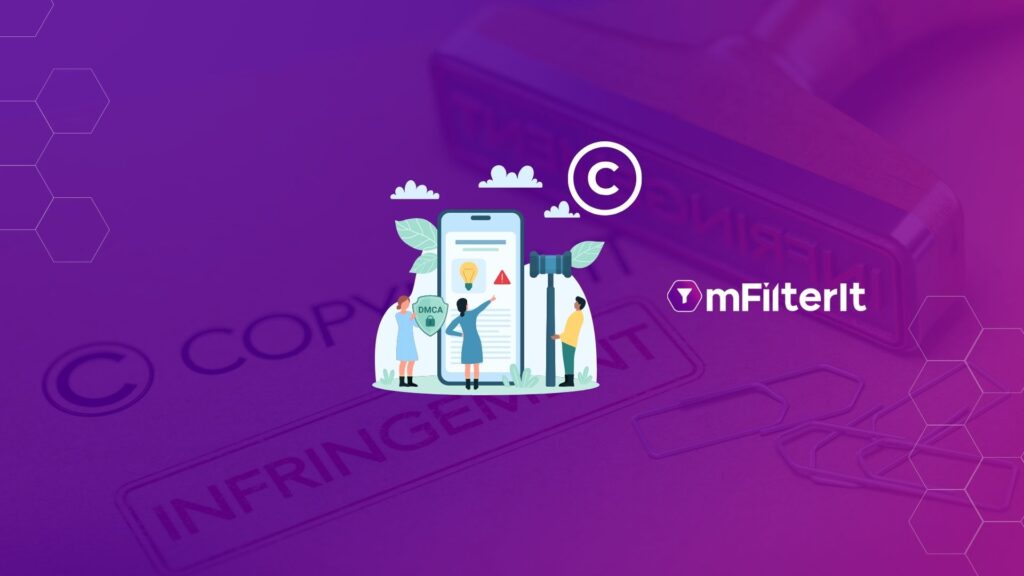The digital world is ever-expanding, encompassing a massive portion of the consumer population today. Consumers come online to purchase goods, for entertainment, banking, consultations, and many other activities that once were done through physical channels only. This shift has drawn more and more brands to the digital network over the years, in order to access the endless pool of potential customers.
Of course, this massive digital exposure has brought in its share of challenges that lead to intended brand infringement and unauthorized use of material by a third party.
A brand’s value lies in the unique identity and reputation it builds among its customers over the span of its existence. Brands build digital representations of themselves that are instantly recognized by consumers. However, this digital advertising can be misused or unduly borrowed by others for unethical business gains, or worse, to affect the original brand’s business.
Many companies are unauthorizedly using material of a third party that is protected under the intellectual property (IP) law of a company. Such cases of “brand infringement” have been largely increasing in the digital age, posing a number of problems for companies as well as consumers. While protection of IP such as trademarks, names, logos, patents, and so on have been covered under the book of law for a long, brands have to take further steps to strengthen their guardrails from infringement.
Different Types of Infringement
With digitalization, violators have developed multiple ways to deceive the audience. Let’s have a look at a few:
-
Trademark Infringement:
This is one of the most common forms of infringement. It involves the unauthorized use of a trademark, that is a word, symbol, design, or a combination of the same, that a company uses to distinguish its products, solutions, or services from others.
-
Copyright Infringement:
Another major form of brand infringement is the unauthorized use of the original expressions and ideas of another seller. Violators produce counterfeit products that are visually identical to an existing product made by a brand, created with no knowledge of the original brand.
-
Typosquatting:
There are a growing number of websites with slight variations of domain names for popular online sites, to attract consumers and project them to counterfeit products. This form of infringement is typosquatting.
-
Cybersquatting:
Through cybersquatting, infringers claim domain names to take advantage of trademarks belonging to someone else, and typically use those domains for their benefit.
The various forms of brand infringement call for high awareness of a brand’s digital surroundings, strict vigilance, and proactive brand protection practices.
Real Instances of Brand Infringement
Ever since a number of infamous infringement incidents came to light, the impact of brand infringements on a business has been gaining global attention. For online businesses, infringement not only causes financial losses but also the loss of customer engagement through a diverted customer base, reduced website traffic, stolen customer data, and reputation damage through misrepresentation.
In 2018, the e-commerce site Flipkart came across a lucky draw contest run by a domain name www.flipkartwinners.com, which impugned their original domain name. Flipkart filed for a permanent injunction to restrain www.flipkartwinners.com’s proprietors from using the trademark. These infringed websites didn’t contain adequate information about the owner or website, and no one appeared in court for the hearing. As a result, the decision favored Flipkart.
Bisleri applied for trademark registration for the word “Maaza” in Turkey and began exporting the same fruit drink under the given name. However the original trademark Maaza was given to Coca-Cola by Bisleri in 1993, and Coca-Cola claimed a permanent injunction and infringement damages for passing off the trademark.
Hence in the court, Bisleri faced an interim injunction for trademark infringement.
Another case is of the US-based e-wallet pioneer, PayPal, which has accused Paytm of copying its logo to grow its user base. Although the court has not come to any clear trade infringement case till now.
All of these brand infringement cases prove that brand infringement can be an expensive affair, but it can prove more expensive for infringers when caught. Read more about such cases.
Actions to Prevent Brand Infringement
The new obstacle amid the global pandemic for brands is maintaining their reputation and value, especially at a time when COVID has compelled a lot many brands to take the digital route. With brands evolving distinct ways of operating and serving customers, the protection of their users becomes a major concern. Due to the increased fraudulent use of brands and the creation of fake trademarks, certain domestic and international government offices and courts are delaying companies’ ability to register and enforce their trademarks.
So, how to safeguard such fraudulent acts during an already testing time? Brands need to develop a strong trade strategy to monitor trademark registrations, including domain names that might conflict with registered marks. A strong domain name strategy is required by brands because failing to make an effort to protect your trademark against infringing domain names might create a platform to deceive customers.
A set of brand guidelines should be crafted, focused on how the brand logo and name are protected and up to what extent a found similarity will be considered as infringement. The brand guidelines should be clear and concise to employees, business partners, and all business associates and stakeholders.
Brands need to maintain consistency in their product packaging name and other vital features so it becomes easy for a consumer to remember the brand and spot differences from counterfeit products. Brands can also partner with trade associations that work closely with regulatory agencies like NAFDAC and SON, who are empowered by law to apprehend and prosecute counterfeiters.
Long story short, brands need to continuously keep a check on infringement. They must make their trademarks distinguishable and aware consumers of digital best practices and ways to identify counterfeits, in order to reduce the rampancy of brand infringements. After all, a brand’s identity is its most valuable asset in the digital age!
Get in touch with our experts for deeper insights. Reach out to learn more!



